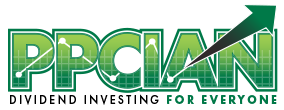Have you checked out my SEM Automation Buyer’s Guide yet? I highly recommend it! You’ll get 12 FREE pages of information about buying the perfect SEM software for your company. I’ve been at the forefront of SEM technology for the last six years and share my proprietary methodology for choosing the perfect platform.
Two Very Popular SEM Bidding Models

Today, I’d like to stay on the topic of SEM automation and specifically discuss two very popular bidding strategies: portfolio theory and margin maximization. I’m a tremendous fan of bidding automation. It’s really the only way to go when you manage hundreds of thousands if not millions of keywords. Of course, you’ll always want to involve human judgment (and supervision), especially on high volume keywords, but a solid bidding model will become your organization’s SEM backbone. At the end of this post, you will walk away with two things:
- An understanding of the differences between portfolio theory and margin maximization.
- An understanding of which model makes the most sense for your particular business model.
What is Portfolio Theory?
Portfolio theory based bidding models involve a parameter (or parameters) you’re trying to maximize given certain constraints. Typically, you’ll find portfolio models set up to maximize volume of conversions within a budget constraint. You’ll often have a cost per acquisition constraint as well, whereby the algorithm stops short of the budget if your overall CPA is running too high.
Within your portfolio, different keywords will end up running at very different CPAs (cost per acquisition). You may have some running at extremely high margins with others even running at a negative margin. It’s all really a function of the CPA/volume tradeoff. In those cases where the algorithm can drive significantly more volume at slightly higher CPAs, it will go for it. In cases where higher CPAs drive relatively less incremental volume, the algorithm will decide to go for margin. At the end of the day, the algorithm does its best to make intelligent tradeoffs so the overall portfolio’s volume is maximized within the constraints.
In my opinion, portfolio based bidding models are absolutely awesome! They tend to break down a bit when you have an unlimited budget, although elements of the portfolio theory can still help you out in that scenario (more on this later). The most well known portfolio software out there: Efficient Frontier.
What is Margin Maximization?
So now we’ll move onto margin maximization. Over the course of my SEM career, I’ve worked mostly at companies that have had unlimited budgets. That’s right! As long as the CPA is at or below the target, I have been free to drive as many conversions as possible. It’s precisely in these types of situations that a margin maximization model thrives.
What is margin maximization? It’s simple: The model basically maximizes your margin (typically percentage margin) on a keyword level. If you have enough statistically significant data on a keyword level, it’s easy to just bid 1 – margin percentage target (while also adjusting upward to take into account slack, the delta between your bid and actual CPC). What if you don’t have enough statistically significant data on a keyword level? The best margin maximization models will forecast your keyword level revenue per visitor based on closely related keywords.
The primary benefit of margin maximization: You can rest at night knowing that you are never losing money on any keywords (as long as your forecasted keyword values are accurate). One of the downsides of margin maximization: You can sometimes leave volume on the table. If you simply take a lower percentage margin on certain keywords, you may be able to drive significantly more volume. There are a few tricks in getting around this downside, however. The first involves experimenting with different percentage margins in an effort to optimize your dollar margin. The second involves experimentation on a keyword level to allow a few loss leaders in your campaign. The margin maximization platform that I’m most familiar with (and highly recommend): Marin Software.
Which SEM Bidding Model Do I Prefer?
So what’s my preference: Portfolio theory or margin maximization? It’s really a function of my constraints. If I have a budget constraint, I’m a portfolio theory guy all the way. If I have unlimited budget, I’m all for margin maximization.
Let me tell you however, even in the second case (unlimited budget), I’m a fan of a hybrid approach. I’ll manage most keywords to a strict margin percentage. However, I will experiment placing my the best keywords (Google.com only, exact match only, category leaders) at higher bids. In cases where I can drive significantly more volume at a lower percentage margin, I’ll sometimes make the tradeoff, especially if my organization needs the volume. In terms of making up the percentage margin for the overall portfolio, I’ll often rely on my trademark terms because they run at such high margins.
So I’ve mentioned Efficient Frontier and Marin Software. What are some other great SEM applications? I recommend checking out Kenshoo and ClickEquations. In a future post, I’m looking forward to discussing some of these SEM applications and more!
Image of Math Equations © iStockPhoto – enot-poloskun

Phenomenal post. I like to apply a model of volume * CPC * (margin > 15%) to find maximum payout. I’m not sure that applies entirely in the case of working for companies specifically, but works well as an affiliate. I’ll target those keywords where total net revenue is maximized. I’ll also run a sample to begin at double statistical relevance to make sure my math works out too.
James,
Thanks so much for the positive feedback, very much appreciated! Thank you also for sharing your bidding model.
All the best,
Ian
I cannot imagine being restrained by a budget if something is profitable. The concept is quite alien.
Interesting terms, most in which I have not heard before, Margin Maximization seems to be handy, but what if the competitor also uses this concept, there really is no limit right? You will both be outbidding each other where there is no limit?
Have worked with Efficient Frontier for a while and definitely prefer its portfolio theory approach to any of the others.
Robby,
I hear ‘ya! If I were in charge, I would always give the paid search team unlimited budget given certain restraints (such as CPA). I have always been blessed to work at companies that have subscribed to that mindset. However, this is unfortunately not the reality at many companies. At the same time, I can only see PPC budgets increasing more and more over the years as savvy management teams see the tremendous ROI (as compared to other channels). Thanks for the comment! Much appreciated, as always! 🙂
All the best,
Ian
Dan,
Thank you so much for visiting my blog and for the comment, I truly appreciate it. Margin maximization is a beautiful thing because you are actually bidding based on your site’s economics. The driving factor in your bid is your site’s revenue per visitor for that specific keyword, adjusted for your margin percentage target (and also slack between bid and realized CPC). You are right in that some bidding models are flawed because you can get in a crazy bidding war. One such example is bid to position (if used without a max bid). Margin maximization, however, provides a great alternative to those types of rules-based models. Dan, thank you once again. You bring up a super question and I appreciate the opportunity to help clarify my post!
All the best,
Ian
Sarah,
Thanks so much for the comment! It’s great to hear that Efficient Frontier (and the portfolio theory approach) is working well for you. That is great news. I have not personally used Efficient Frontier before but have heard great things (and also really enjoyed hearing one of their PhDs present at SMX Advanced Seattle). Thanks again for stopping by!
All the best,
Ian
Both models are pretty good for SEM Bidding Models. But, yeah with the budget constraint, I’d also go with portfolio theory.
Thanks for yet another first-rate article. I am always searching for super tips to recommend to my own readers. Thank you for making this article. It’s exactly what I was searching for. Truly terrific post.
Justin,
Thanks so much for visiting my blog and for the comment! Very much appreciated!
All the best,
Ian
Carol,
Thanks so much for visiting my blog and for the kind words! I truly appreciate the positive feedback. Your site looks awesome and I’m really looking forward to checking it out.
All the best,
Ian
Hi, its my first time to your blog, killer design man! I’m really feeling the logo with that gradient effect.
Thanks for the information about margins, very helpful.
Chris,
Thanks so much for the positive feedback! Very much appreciated. My friends at Unique Blog Designs designed and built my blog! They truly did an amazing job. I’m excited actually that we’re in the middle of another round of updates now and I just got a new killer footer last Friday thanks to Matt at UBD. Chris, thanks again, I appreciate it!
Best,
Ian
great explained ian really useful for bloggers I want this at my fingertips and making bookmark for that purpose.